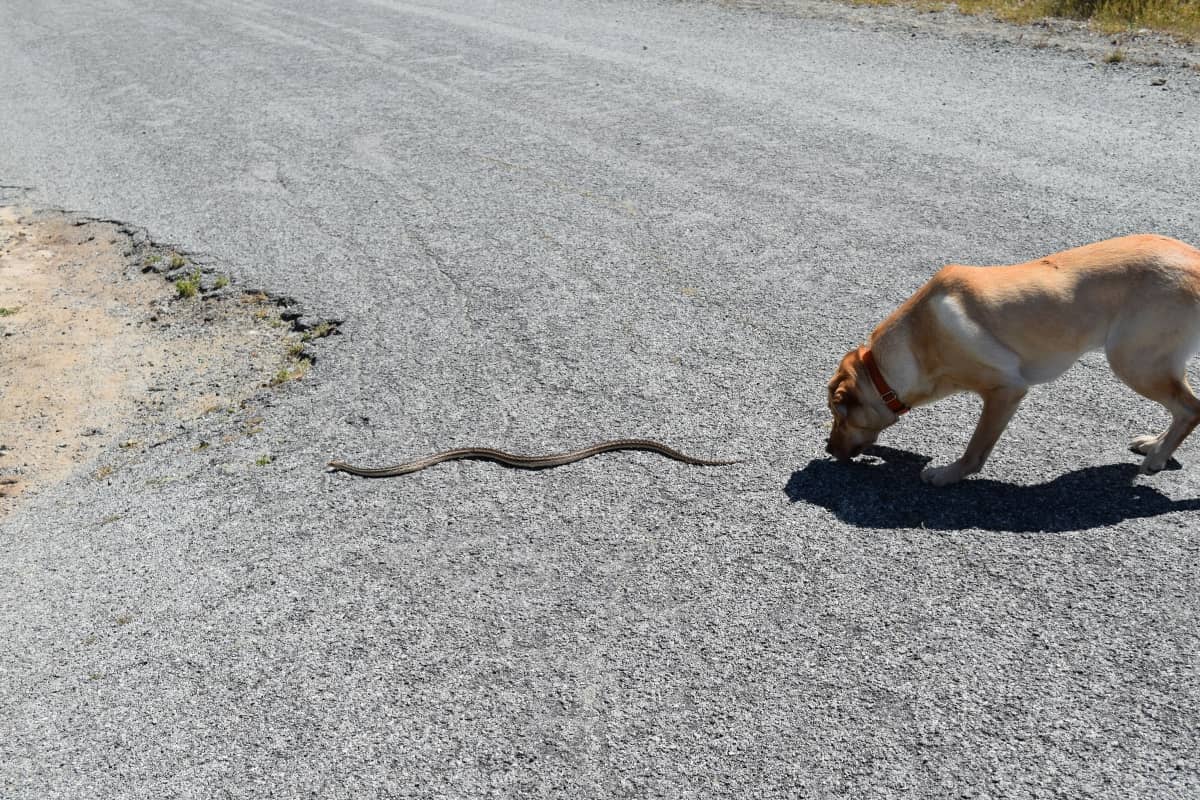
Australia is home to some of the world’s deadliest snakes. Because of this, our dogs have an increased risk of getting bitten. Do you know what to do if an unwanted guest slithers into your backyard and your dog is bitten by a snake? This is how to recognise a snake bite and what steps you need to take to help save your dog’s life.
Why are dogs more at risk of getting bitten by snakes?
There are a few reasons why dogs are more likely to get bitten by a snake. First of all, our four-legged friends are overly curious and love chasing anything that moves. Combine their natural prey drive with a socially awkward snake and you’re left with a dangerous situation.
Another reason why dogs get bitten, is because of their surroundings. A snake might slither under your fence and unknowingly find themselves near your pooch, or your dog might stumble upon a sleeping serpent during your walk.
What are snake bite symptoms in dogs?
Can you always see a snake bite on your dog? A common belief is that if you can’t see any bite marks, there’s no bite and your dog is fine. We hate to break it to you, but snake bites are incredibly difficult to see with the naked eye. There are other symptoms to look out for, including:
- Sudden onset of lethargy and weakness
- Muscle tremors and shaking
- Dilated pupils
- Paralysis (e.g. in the hind legs)
- Loss of bowel and bladder control
- Bloody or dark urine
- Irregular bleeding, from your dog’s nose, mouth or anus
- Pale gums
- Vomiting
- Unconsciousness
Take your dog to the vet immediately if you suspect a snake bite. They might seem fine at first but they can deteriorate quickly. The sooner your dog receives treatment, the more chance they have to make a full recovery.
How long does it take for a snake bite to affect a dog?
The severity and duration of symptoms depends on:
- what species of snake bit your dog
- the amount of venom injected by the snake
- your dog’s health
Did you know symptoms don’t always appear straight away? Just because your dog looks fine at first doesn’t mean they can’t go downhill in a matter of hours. The sooner you get to a vet, the better!

How are dogs treated for snake bites?
We’ll say it again for the people in the back: if you suspect your dog has been bitten, take them to a vet! There are a few steps you can take before getting to the vet that can help your dog:
- Limit your dog’s movement and remain calm. By doing this, the snake’s venom can’t spread as fast as it would if you continue to let your dog run around.
- Call your vet immediately and let them know you’re coming in with your dog with a (suspected) snake bite. They will also be able to give you helpful tips over the phone.
- Carry your dog to the car if possible, so they don’t move any more than they have to.
- If you have located the bite mark, cover it with a pressure immobilisation bandage if you have any in your first aid kit. This prevents the venom from spreading. Don’t use a torniquet as it can cut off your dog’s circulation.
- Try to identify the snake to relay this information to your vet, but don’t worry if you can’t. Vets have special kits to see which species of snake is the culprit.
- Don’t try to kill or catch the snake. Not only can you hurt yourself in the process, but snakes are protected species and injuring them is illegal.
- If you have any other pets, move them inside so that they are out of harm’s way in case the snake comes back for round two while you’re at the vet.
At the vet with your dog
Once you get to your vet, they will be able to take the necessary steps to help your dog. They either use a urine or blood sample or swab the area of the suspected bite mark to check for any signs of venom. This identifies what species of snake bit your dog and what antivenom can be used.
Research from the RSPCA has found that antivenom increases the survival rate of dogs bitten by a snake to 82.4%. If left untreated, your dog’s survival rate is a mere 33.3%. This goes to show just how important it is to get your dog to a vet as soon as possible. Don’t delay!
How to prevent snake bites
As a pet owner, there are a number of things you can do to decrease the risk of your dog getting bitten by a snake:
- Check your backyard for snakes before letting your dog outside
- Keep an eye on local community pages for any local snake sightings
- Keep your lawn nice and short
- Make sure your backyard is clear of any debris and objects snakes can hide in
- Be cautious on walks and keep an eye on where your dog is sniffing (and off your phone)
How to prepare for emergency situations
Snakes like to come out of hiding and soak up the solstice sun during the hotter months. It’s therefore best to have your vet’s number on speed dial before the weather warms up.
There are also pet first aid kits available for all types of situations, including tick bites, snake bites, wounds and hypothermia. You never know when you might need it, but you’ll be glad you have it when you do.
